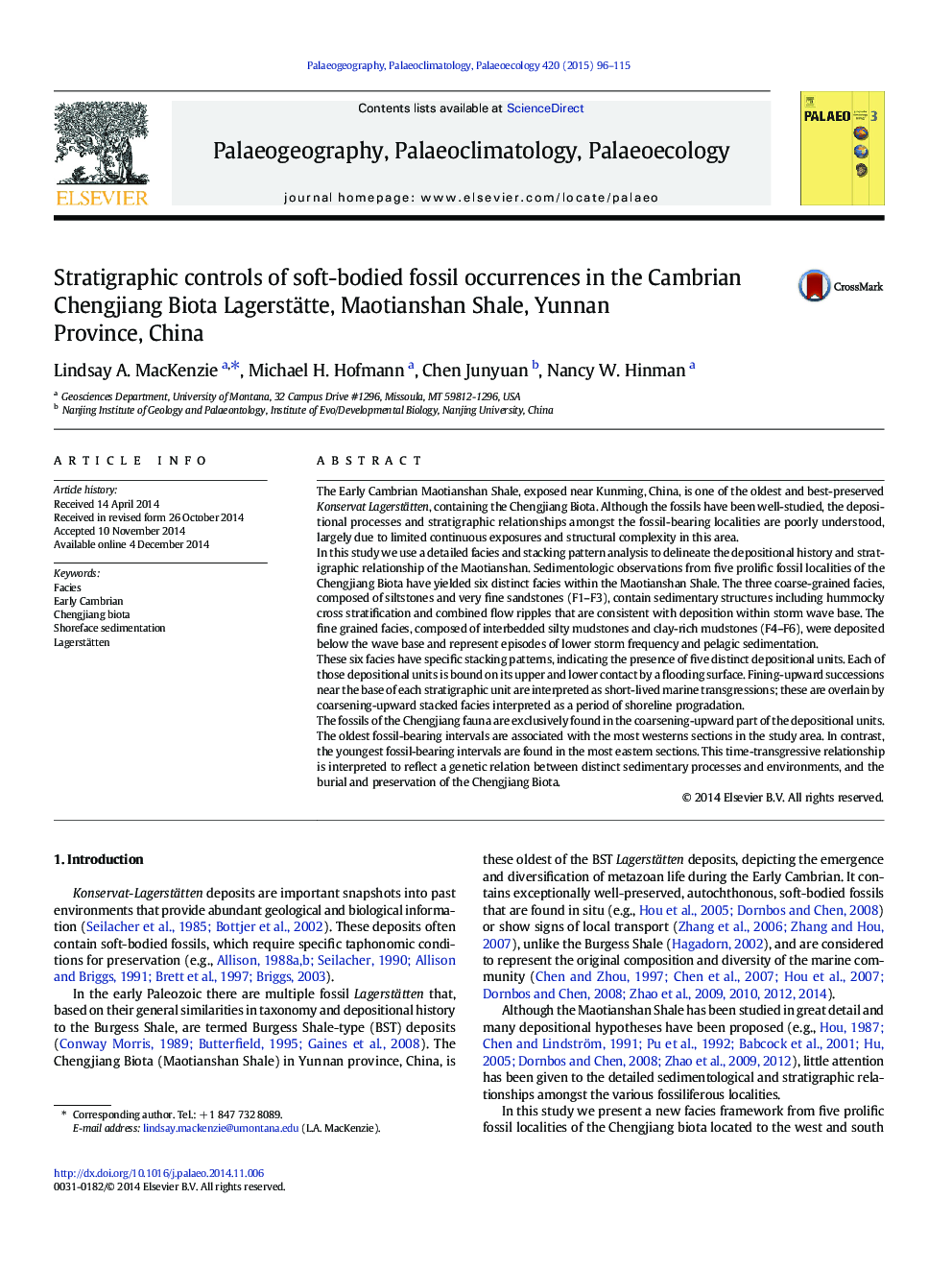| کد مقاله | کد نشریه | سال انتشار | مقاله انگلیسی | نسخه تمام متن |
|---|---|---|---|---|
| 4466059 | 1622170 | 2015 | 20 صفحه PDF | دانلود رایگان |

• The Maotianshan Shale is composed of six recurring lithofacies.
• All facies were deposited in a shallow basin largely within wave base.
• Five distinct depositional units were identified in the study area.
• The Chengjiang biota occupies defined stratigraphic positions in a prograding shoreline succession.
The Early Cambrian Maotianshan Shale, exposed near Kunming, China, is one of the oldest and best-preserved Konservat Lagerstätten, containing the Chengjiang Biota. Although the fossils have been well-studied, the depositional processes and stratigraphic relationships amongst the fossil-bearing localities are poorly understood, largely due to limited continuous exposures and structural complexity in this area.In this study we use a detailed facies and stacking pattern analysis to delineate the depositional history and stratigraphic relationship of the Maotianshan. Sedimentologic observations from five prolific fossil localities of the Chengjiang Biota have yielded six distinct facies within the Maotianshan Shale. The three coarse-grained facies, composed of siltstones and very fine sandstones (F1–F3), contain sedimentary structures including hummocky cross stratification and combined flow ripples that are consistent with deposition within storm wave base. The fine grained facies, composed of interbedded silty mudstones and clay-rich mudstones (F4–F6), were deposited below the wave base and represent episodes of lower storm frequency and pelagic sedimentation.These six facies have specific stacking patterns, indicating the presence of five distinct depositional units. Each of those depositional units is bound on its upper and lower contact by a flooding surface. Fining-upward successions near the base of each stratigraphic unit are interpreted as short-lived marine transgressions; these are overlain by coarsening-upward stacked facies interpreted as a period of shoreline progradation.The fossils of the Chengjiang fauna are exclusively found in the coarsening-upward part of the depositional units. The oldest fossil-bearing intervals are associated with the most westerns sections in the study area. In contrast, the youngest fossil-bearing intervals are found in the most eastern sections. This time-transgressive relationship is interpreted to reflect a genetic relation between distinct sedimentary processes and environments, and the burial and preservation of the Chengjiang Biota.
Journal: Palaeogeography, Palaeoclimatology, Palaeoecology - Volume 420, 15 February 2015, Pages 96–115